The Magyar Nemzeti Bank will issue a gold commemorative coin named ‘Golden Florin of Vladislaus I’ with a face value of HUF 50,000 in normal and piedfort (four times the weight of a normal coin) sizes on 14 January 2020. A non-ferrous metal version with a face value of HUF 2,000 of the collector coin will also be issued. All three commemorative coins are additions to the ‘Hungarian gold florins from the Middle Ages’ series launched in 2012. The collector coins were designed by goldsmith Zoltán Tóth.
The MNB issued the gold coin of Charles I as the first piece in the series ‘Hungarian gold florins from the Middle Ages’ in 2012 with the aim of providing a full picture of good quality coins in medieval Hungarian money history, which preserved their value and were frequently accepted by foreign merchants as well. To be true to history, the first piece of the series was followed by the golden florin of Louis I in 2013, Queen Mary in 2014, Sigismund in 2016 and Albert in 2018.
The ‘Golden florin of Vladislaus I’ collector coins are legal tender in Hungary, but they do not serve circulatory purposes. Their primary role is to provide education. By issuing this coin, the MNB wishes to highlight the values of Hungarian money history, the historic predecessors of our national currency, the Medieval golden florins. The gold and the non-ferrous metal versions have the same design, the only difference being their denominations.
A coat-of-arms split into four parts, shown on the golden coins of Vladislaus I, is featured as the main motif on the obverse in an asymmetric arrangement, bordered by a string of pearls arranged in a slightly unorderly manner, typical of Medieval coins. The coat of arms, split into four parts, was typically featured on golden forints from Sigismund’s rule uniting the elements of family and Hungarian royal coats of arms (Hungarian splits and the double cross). The coins, issued by Vladislaus I, are strongly distinguished from the golden florins of his predecessors by the representation of the Polish eagle and the Lithuanian knight appearing as a family coat-of-arms.
Another reference to money history on the obverse is a representation of a typical coin minter of the 1400s, presenting an authentic minting technique.
The compulsory design elements of collector coins are placed on the obverse: the lettering ‘MAGYARORSZÁG’ in the upper legend, in the lower left legend the denominations HUF 50,000 or HUF 2,000 FORINT, on the horizontal central axis the mint year and the mint mark ‘BP.’ broken into two lines above one another.
The obverse of the Golden florin of Vladislaus I collector coins
Az I. Ulászló aranyforintja emlékpénzérmék előlapja
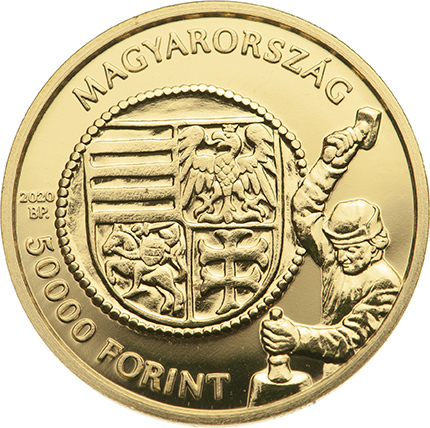 Gold collector coin standard size |
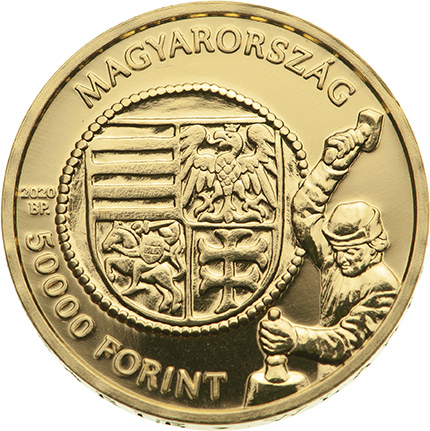 Gold collector coin piedfort - four times the weight of a normal coin |
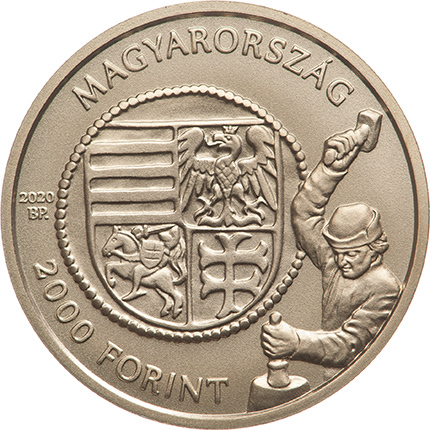 Non-ferrous metal collector coin |
On the obverse, the golden florin of Vladislaus I is shown, with the only difference being that Saint Ladislaus’s figure was enlarged against the representation on the original coin by goldsmith Zoltán Tóth, the designer of the coin. Placed in the outer ring, the lettering ‘I. ULÁSZLÓ ARANYFORINTJA’ (the golden florin of Vladislaus I) is shown in the upper legend, and in the lower legend the years 1440 and 1444 make a reference to the time of Vladislaus I’s reign. The upper and lower legends are separated by a circular, decorative motif on the left and the master mark of Zoltán Tóth on the right.
The reverse of The Golden Florin of Vladislaus I coins
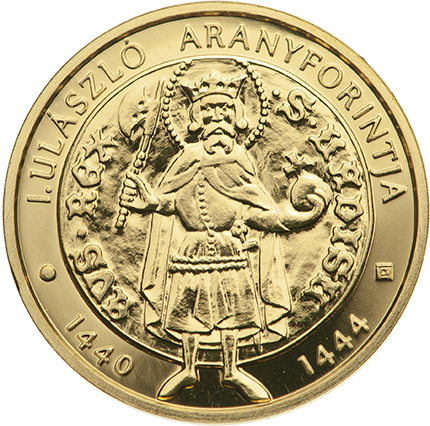 Gold collector coin standard size |
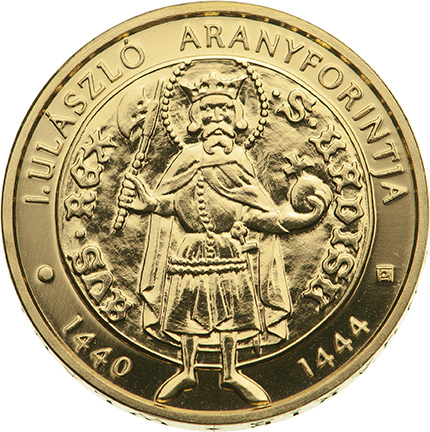 Gold collector coin piedfort - four times the weight of a normal coin |
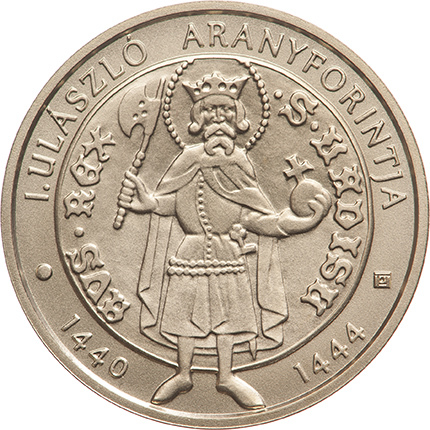 Non-ferrous metal collector coin |
The gold coin with a face value of HUF 50,000 is struck in .986 fine gold. The normal coin weighs 3.491 grams (1 ducat) and the piedfort coin weighs 13.964 grams (4 ducats). The non-ferrous metal coin with a face value of HUF 2,000 is produced from an alloy of copper (75%), nickel (4%) zinc (21%) and weighs 2.7 grams. The edge of the normal and piedfort gold coins is smooth. The piedfort version is decorated with the Latin inscription ‘WLADISLAVS DEI GRATIA REX VNGARIE’ on the edge, meaning ‘Vladislaus, king of Hungary by the grace of God’. All three coins have the same diameter of 20 mm.
Since 2014, all collector coins produced from precious metals have also been issued in low-cost version made from non-ferrous metals. To facilitate the enforcement of the coins' value transferring and educational role as widely as possible the non-ferrous metal collector coin with a face value of HUF 2000 can be purchased for one year, subject to availability, at the face value from 14 January 2020 onwards at the coin shop of Hungarian Mint Ltd. (7 Báthory u., distr. V, Budapest), and in the webshop on the company’s website (http://penzvero.hu/).
The mintage limit of the standard size collector coin is 2000 and that of the piedfort coin is 500 in proof finish. The mintage limit of the non-ferrous coin is 5000 in BU finish.